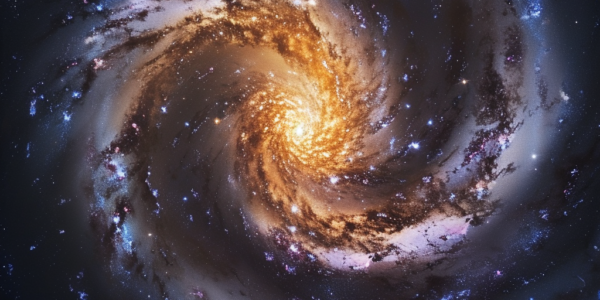Astronomers Discover Brightest and Most Voracious Black Hole Ever Detected
The discovery of the brightest and most voracious black hole ever detected, known as J0529-4351, has left astronomers in awe. This remarkable finding was confirmed through observations by the Very Large Telescope in Chile. Scientists revealed that the black hole devours the mass equivalent to one Sun every day, highlighting its insatiable appetite. J0529-4351, although recorded in data many years ago, has only recently been recognized for its true glory. Quasars like J0529-4351 are the energetic cores of galaxies powered by immense black holes, known as Active Galactic Nuclei (AGN). The quasar’s emission, which took 12 billion years to reach the detectors at the VLT, is over 500 trillion times more luminous than the Sun, making it an astonishing discovery in the field of astronomy.
The Search for Extraterrestrial Life: Using Supernovae as a Focal Point
In the search for alien civilizations, researchers have proposed using bright galactic events like supernovae as a focal point for civilizations to announce their presence. SETI, dedicated to research and education, aims to drive exploration into the origins of life across the Universe. A recent paper reported an exciting development in the search for ET, using observations from the Transiting Exoplanet Survey Satellite (TESS) to monitor the SETI Ellipsoid. These findings open up new possibilities for exploring the existence of extraterrestrial life.
Scientists Make Breakthrough in Study of Cannibalized Stars
Georgia State University’s Center for High Angular Resolution Astronomy (CHARA) Array scientists have made a breakthrough in the study of cannibalized stars. The research team led by Postdoctoral Research Associate Robert Klement completed a survey of stars suspected to have devoured gas from orbiting companion stars, directly detecting the feeble glow of the cannibalized stars. Published in The Astrophysical Journal, the findings shed light on the life trajectory of close binary stars, providing valuable insights into the dynamics of these star systems.
China’s Jiaotong University Spectroscopic Telescope Set to be Operational in 2026
China’s Jiaotong University Spectroscopic Telescope, set to be operational in 2026, will be a game-changer in exoplanet exploration with its 4.4-meter aperture and high-precision spectrometer. Located in northwest China’s Qinghai Province, it is expected to lead to breakthrough research results in time-domain astronomy and remain the most dominant spectral telescope in China for a significant period.
Harvard Professor Claims New Evidence of Alien Spacecraft
Harvard astronomy professor Avi Loeb claims to have found new evidence of alien spacecraft in small magnetic spherules recovered from the Pacific Ocean. Despite facing criticism, Loeb defends his work as evidence-based and not opinion-driven. This is not the first time Loeb has made controversial claims about extraterrestrial objects, and he has founded The Galileo Project at Harvard to search for extraterrestrial life using machine learning and observatories.
Astronomers Witness Powerful Jets Ejected from Supermassive Black Hole Perseus A
Astronomers have made a groundbreaking observation of the supermassive black hole, Perseus A, using the Event Horizon Telescope. This discovery sheds light on the battle between magnetism and gravity within black holes, providing valuable insights into their feeding mechanisms and the formation of powerful jets that extend far beyond their host galaxies.
Anticipation Grows for 2024 Total Solar Eclipse
Excitement is building for the upcoming total solar eclipse set to occur in 2024, and people are eager to witness this rare celestial event. The duration of totality and the number of people who will be able to see it…
Study Explores Dark Matter’s Role in Galactic Dynamics
Dark matter, the elusive substance that makes up much of the matter in the universe, continues to intrigue astronomers. A recent study, detailed in the pre-print server arXiv, delves into the speed at which dark matter can move and its…
North American Sky-Gazers Prepare for Total Solar Eclipse
On April 8, 2024, North American sky-gazers will experience one of the decade’s most buzzed-about interstellar events: a total solar eclipse. During this event, the moon will slide between Earth and the sun, turning day into eerie dusk along a…
February Skygazing: What to Expect in the Night Sky This Month
February skygazing: Here’s what you can expect to see in the night sky this month By Andrew Wulfeck February is a time period that astronomers are hoping quickly passes by as there are few significant events on the docket for…










